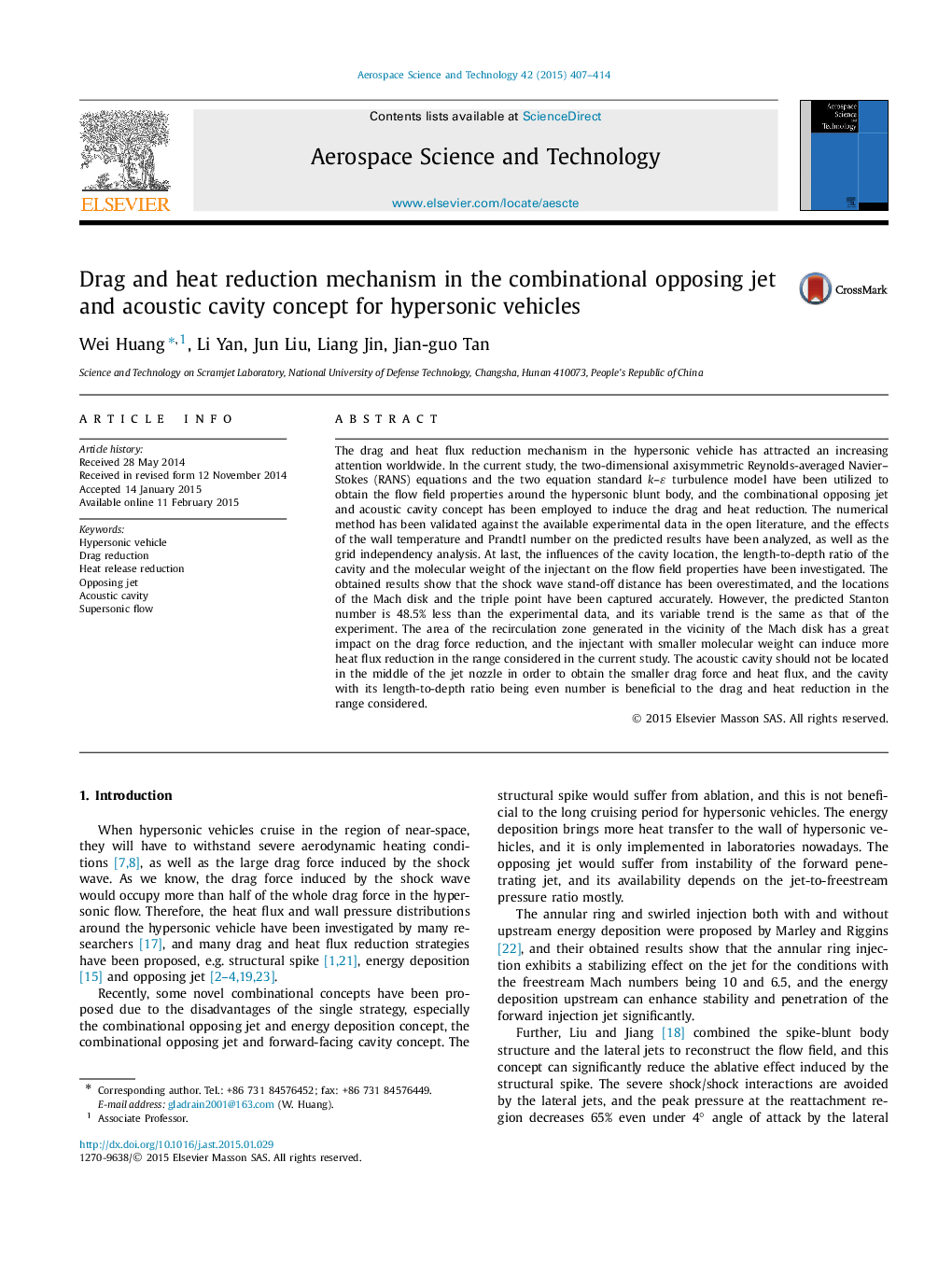| Article ID | Journal | Published Year | Pages | File Type |
|---|---|---|---|---|
| 1717939 | Aerospace Science and Technology | 2015 | 8 Pages |
The drag and heat flux reduction mechanism in the hypersonic vehicle has attracted an increasing attention worldwide. In the current study, the two-dimensional axisymmetric Reynolds-averaged Navier–Stokes (RANS) equations and the two equation standard k–εk–ε turbulence model have been utilized to obtain the flow field properties around the hypersonic blunt body, and the combinational opposing jet and acoustic cavity concept has been employed to induce the drag and heat reduction. The numerical method has been validated against the available experimental data in the open literature, and the effects of the wall temperature and Prandtl number on the predicted results have been analyzed, as well as the grid independency analysis. At last, the influences of the cavity location, the length-to-depth ratio of the cavity and the molecular weight of the injectant on the flow field properties have been investigated. The obtained results show that the shock wave stand-off distance has been overestimated, and the locations of the Mach disk and the triple point have been captured accurately. However, the predicted Stanton number is 48.5% less than the experimental data, and its variable trend is the same as that of the experiment. The area of the recirculation zone generated in the vicinity of the Mach disk has a great impact on the drag force reduction, and the injectant with smaller molecular weight can induce more heat flux reduction in the range considered in the current study. The acoustic cavity should not be located in the middle of the jet nozzle in order to obtain the smaller drag force and heat flux, and the cavity with its length-to-depth ratio being even number is beneficial to the drag and heat reduction in the range considered.
